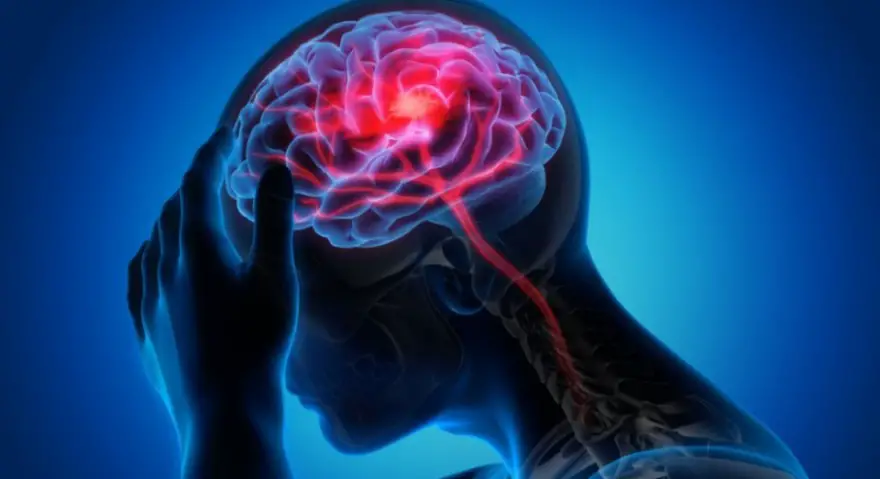The headache disability index is an effective and reliable instrument for assessing headache disability in diverse persons.
Medical experts use this instrument to categorize headache disability for varying purposes like social security insurance and other benefits. So, it makes sense to have forehand knowledge of this instrument if you have a headache disability condition.
In this article, I’ll show you how a headache disability index works, plus other headache-disability-related information to help you have a clear understanding of the topic.
Don’t forget to share the love with others.
Table of Contents
- Here’s Everything You Should Know about Headache Disability
- Types of Headache Disability Conditions
- How to Score Headache Disability Index
- How to Get Headache Disability Benefits?
- How to Deal with Headache Disability
Here’s Everything You Should Know about Headache Disability
According to the World Health Organization, a person can claim a headache disability if they cannot work due to frequent and severe headaches. This includes cluster headaches, tension-type headaches, and migraine.
It is worth noting that headache disability can be secondary to other disabilities like blindness and musculoskeletal disorders. Headache disorders are usually under-rated and under-recognized, but sadly, they do exist and can influence a person’s life.
The common symptom of headache disorders is a recurrent headache, which negatively affects the quality of life. A medical practitioner is in the best position to diagnose a headache disability. And this is where the headache disability index comes in.
Related: How to Get Disability Benefits for Scoliosis
Types of Headache Disability Conditions
There are 4 headache disorders recognized by the World Health Organization. Let’s check them in detail.

Cluster headache
Cluster headache can be chronic or episodic, depending on the number of times it occurs and the symptoms. Cluster headache is not so common, affecting 2 in 200 individuals in their 20’s. This headache disability comes with a brief and frequent recurring severe headache focused around or in one eye.
This condition causes redness of the eyes, blocked or running nose, and drooping eyelids of the affected side of the head.
Medication overuse headache
The medication overuse headache is another headache disability recognized by WHO. This condition is caused by the chronic use of medications for treating headaches. The symptom is a persistent, oppressive, and awakening headache on one side or all sides of the head.
While some experts consider the medication overuse headache as a secondary headache disability, others don’t. Regardless, this condition has a societal and personal influence on the patient.
Tension-type headache
Next is the tension-type headache that affects about 70% of some populations. This condition is best described as pressure on or around the head, which sometimes spreads from or into the neck.
Just like the cluster headache, the tension-type headache can be episodic or chronic. However, the chronic tension-type headache is more disabling and unremitting than the episodic tension-type headache.
Bear in mind that this condition is caused by musculoskeletal problems in the neck region and stress-related issues.
Migraine
Migraine has been a life-long headache disability that sometimes starts around puberty. It comes with recurring attacks like nausea and one-sided headache. Migraine is common in women owing to their hormonal imbalance.
So, you stand a chance of getting social benefits if you are battling migraine; it’s a widely recognized headache disorder.
Related: How Fat Do You Have to be to Get Disability? (Answered)
How to Score Headache Disability Index
The headache disability index is a 27-item questionnaire used for accessing headache disability in an individual. This instrument considers vital information to determine a patient’s headache disability score.
The information includes the intensity and frequency of the headache, whether it is once per month, more than once per week, or more than once but less than four times per week.

A “yes” answer equals 4 points on the headache disability index while a “sometimes” and a “no” answers equal 2 and 0 points respectively.
You are expected to answer the 27 questions and sum up your points to score your headache disability. A total score of “10 to 28” is considered a mild headache disability, “30 to 48” is considered a moderate disability, “50 to 68” is considered a severe headache disability, and “72 and above” is considered a complete headache disability.
That’s how relatively easy it is to score the headache disability index. But note that only severe and complete headache disabilities are considered eligible and likely to get social security insurance.
So, what’s the next course of action after scoring your headache disability index?
How to Get Headache Disability Benefits?
It’s time to apply for headache disability benefits after you’ve been confirmed eligible.
Don’t forget that mild and moderate headache disabilities are likely not going to get approved for social security insurance. However, it is worth trying if you and your attorney think you stand a chance.
Here’s how to apply for headache disability benefits.
Get your medical records
This ranges from your patient ID number to test results, list of medications, and treatments. Make sure to attach recent documentation of your headache disability from your headache specialists. The documentation should contain the symptoms you get from a headache disability attack and the side effects of your medications.
Provide information on your background
Your background information is required for processing your social security insurance. Provide a list of your education, training, and work history. Surprisingly, your credits in the past years before your disability play a major role in determining the success of your application.
Apply for the benefits
Once you’ve nailed the prerequisites above, proceed to fill out an application form. You can decide to fill out your application online or visit your local social security office. Whichever you decide, make sure to input your details correctly.
While applying for the benefits, you are required to provide some information like the names of your children and spouse, their birthdays, your marriage dates, and alternate contract. It usually takes 2-3 months before the application is approved and you get your benefits.
Related: How to Ask About Disability in a Survey
How to Deal with Headache Disability
Your headache disability benefits may not come immediately, and you have to manage to work for a while to pay your bills. I have provided the best ways to deal with headache disability till you get approval for the benefits.
Get rid of strong odors
Pungent smells like cigarette smoke, onions, garlic, and fecal matter can trigger a migraine attack. You must steer clear of them while temporarily working to pay your bills.
Reduce noise
Ensure that you minimize the noise level at home and your workplace. You can leverage earplugs and muffs to reduce noise from the environment.
Change your lighting
Lightening can also trigger migraine and other headache disorders. Try as much as possible to provide alternate lighting at your workplace. Speak to your employer about this and let them see the reasons why alternate lighting should be considered for you.




